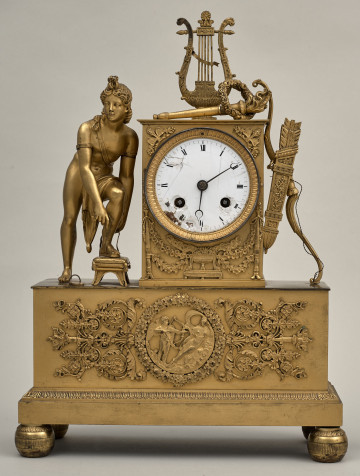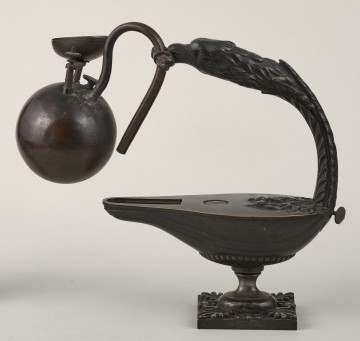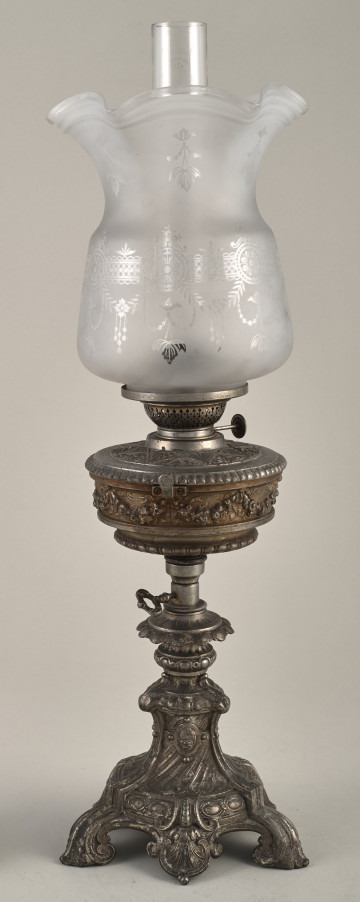
Mantel clock
19th (?) century
Castle Museum in Łańcut
Part of the collection: Metale
Curtain Handle A lavishly decorated handle for arranging the curtains, made of gilded bronze (cast dated at the 19th century), from the Potocki collection. The small-size handle in the form of a stylised cartouche in the neo-Rococo style, comprises a wall badge ˗ a cartouche topped with a palmette decorated with decorative ferrules and ended with two volutes and a campanula. A hook in the shape of a volute is attached to the upper part, curved in the shape of an “S” and decorated with a pearl ornament and acanthus leaves. Curtains performed two functions at homes: decorative and utilitarian. The history of drapes goes back to the ancient times, while their use became popular in the 19th century when, following the industrial revolution, machine production of textiles was started, which made them commonly available. The decorative function of the curtains consisted in filling the window opening, usually with decorative material with rich textures, at the same time shading the interior. Textiles were draped in a number of ways; usually, they were arranged on both sides of the window with decorative sashes with tassels. The utilitarian function primarily consisted in additional insulation of rooms, usually unheated. Curtains were often made of velvet, plush and repp, which were materials offering good insulation from draught from unsealed windows. If other textiles were used, e.g. damask, they were lined with flannel and fleece on the side of the window. Draping of the curtains (among other with the use of handles) was popularised in the 17th century in England and later in the rest of Europe. Today, in spite of the fact that various types of blinds and technical solutions are used, the fashion for textile curtains, symmetrically draped on both sides of the window as decoration, is back. Handles, similarly to other daily use items, changed together with fashion, and their appearance and mode of decoration corresponded to the current style in art. Many handles of this type were preserved in the castle collections (usually two per window). The described handle derives from one of the windows in the Turkish Apartment on the ground floor of the Castle.
Author / creator
Dimensions
height: 11.2 cm, width: 4 cm
Object type
Metals
Technique
metallurgical
Material
bronze
Creation time / dating
Creation / finding place
Owner
Castle Museum in Łańcut
Identification number
Location / status

19th (?) century
Castle Museum in Łańcut

18th century
Castle Museum in Łańcut

19th (?) century
Castle Museum in Łańcut
DISCOVER this TOPIC
National Museum in Lublin
DISCOVER this PATH
Educational path